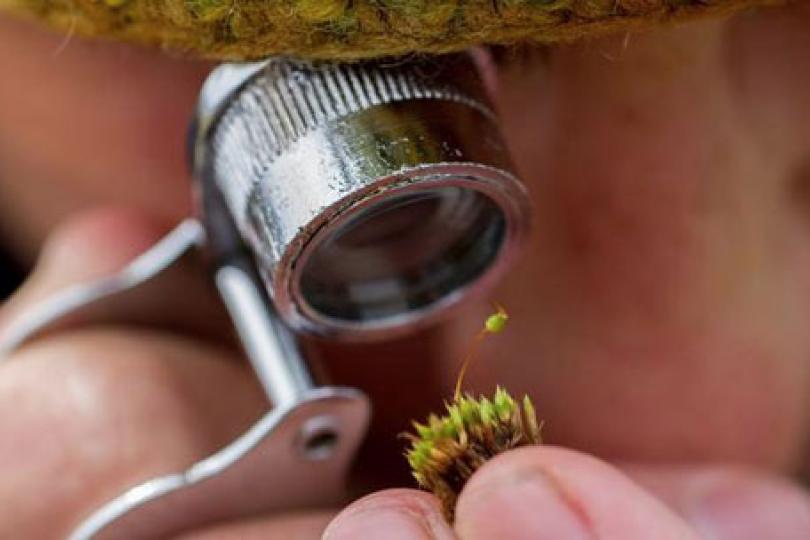The tiny forest that saved the wilderness
Editor's note: The following story first appeared on the BBC website.
Presented by Zoe Gough
When it comes to wildlife conservation a huge personality or bags of charisma tends to help your cause.
Prefacing any group of animals or plants with the words 'big', 'great' or 'giant' seems to win them fans. Big cats, great apes and giant redwoods are all the focus of on-going research, campaigns and policies attempting to preserve them for future generations.
The public are easily drawn to helping iconic and visually-impressive species, which in turn leads to their plight being prioritised.
But scientists are beginning to call for more attention to be paid to those that fail to make the list of nature’s big and beautiful.
In a remote part of South America a team of researchers and conservationists have managed to make that call a reality after uncovering an exceptional array of little plants and lichens.
The Sub Antarctic Magellanic region spans parts of Argentina and Chile and has a rich diversity of wild habitats including the world’s most southerly forests, rocky beaches, moorland, tundra and high-altitude zones.
Early efforts to protect the area failed due to its perceived lack of biodiversity but discussions with native Yaghan elders encouraged scientists to look more closely at some of its smallest and previously overlooked inhabitants.
A survey of the bryophytes (mosses, hornworts and liverworts) and lichens living there showed that more than 5% of the world’s bryophytes were found there, making the area a global hotspot for the tiny plants.
Armed with this new information the team began a conservation and education programme called Ecotourism with a Hand Lens, which encourages tourists to take a tour of the newly named 'miniature forests'.
The small organisms that visitors encountered and began to understand eventually led to the designation of the Cape Horn Biosphere Reserve (CHBR) by UNESCO, finally guaranteeing protection for one of the world’s last unspoilt regions.
Ecologist Dr Adam Wilson has worked as a scientific photographer in the CHBR and became fascinated with the tiny plants.
“When I first walked into the forest my first reaction was that they didn’t look that different from forests where I grew up in the North-eastern US,” he says.
“But I knew about the incredible diversity of bryophytes in the region and so quickly approached a fallen tree, dropped to my knees, and looked closely.
“The log was nearly completely covered by at least a dozen colourful species of mosses and lichens. As I looked around I realized that this log was not unusual; diversity was everywhere.”
His photos have featured in two books, which have continued to introduce people to the usually unseen beauty of the miniature forests.
“We find that most people have never had the opportunity to look closely at mosses and lichens, and are very surprised when they see how intricate they are,” says Lily Lewis, who co-authored the books.
Dr Wilson captured his images from very close range, selecting a spot and spending up to half an hour exploring the immediate area.
“Macro-photography is about finding an interesting angle on a familiar subject. So that might be looking up from under a log into a droplet of water hanging from a small fern,” he says.
“From my ‘normal’ perspective looking down to the ground, it would have been nearly impossible to notice.
“Of course, this involves all sorts of contortions; I’m glad no one was there to photograph me.”
Cleanest water
The mosses and lichens perform important roles within the region which the scientists say boasts the cleanest water in the world.
“Just like the larger forests, the miniature forests are inhabited by a diverse fauna of insects, explains Ms Lewis.
"They are shaped by the movements of birds, they interact with fungi and cyanobacteria in the complex flow of nutrients, they are significant carbon sinks, and they influence the flow of water through the ecosystem."
The region still faces threats to its unique diversity but showcasing the tiny but valuable plants and lichens found there has ensured research, education and monitoring will continue.
“In our day-to-day lives, we become accustomed to where we ‘should’ find beauty and tend to overlook what seems ordinary on first glance. There is no ordinary,” says Dr Wilson.
“People are surprised to find beauty in unexpected places and few would put moss anywhere near the top of their list. But I would guess most have never really looked.”

